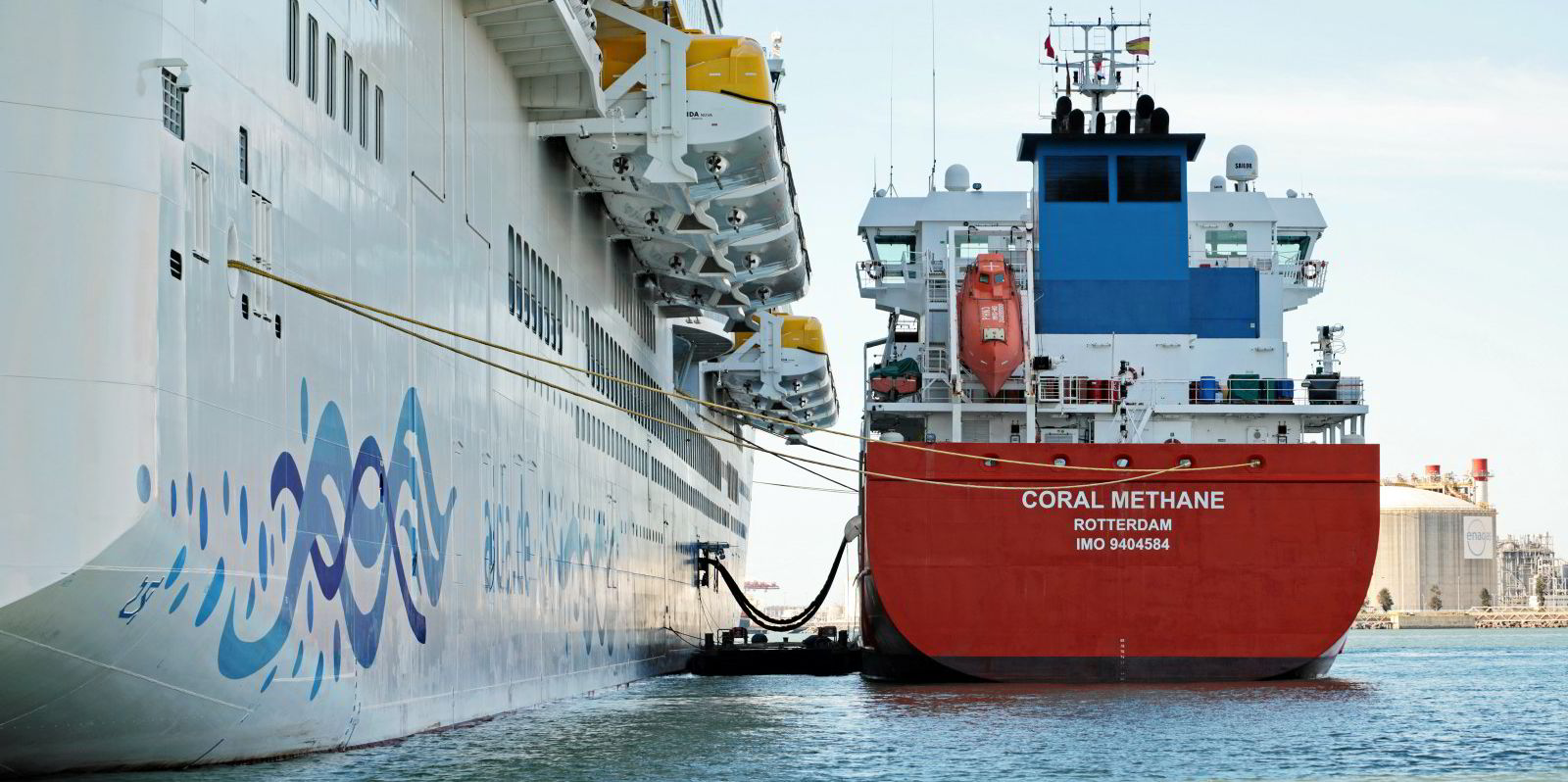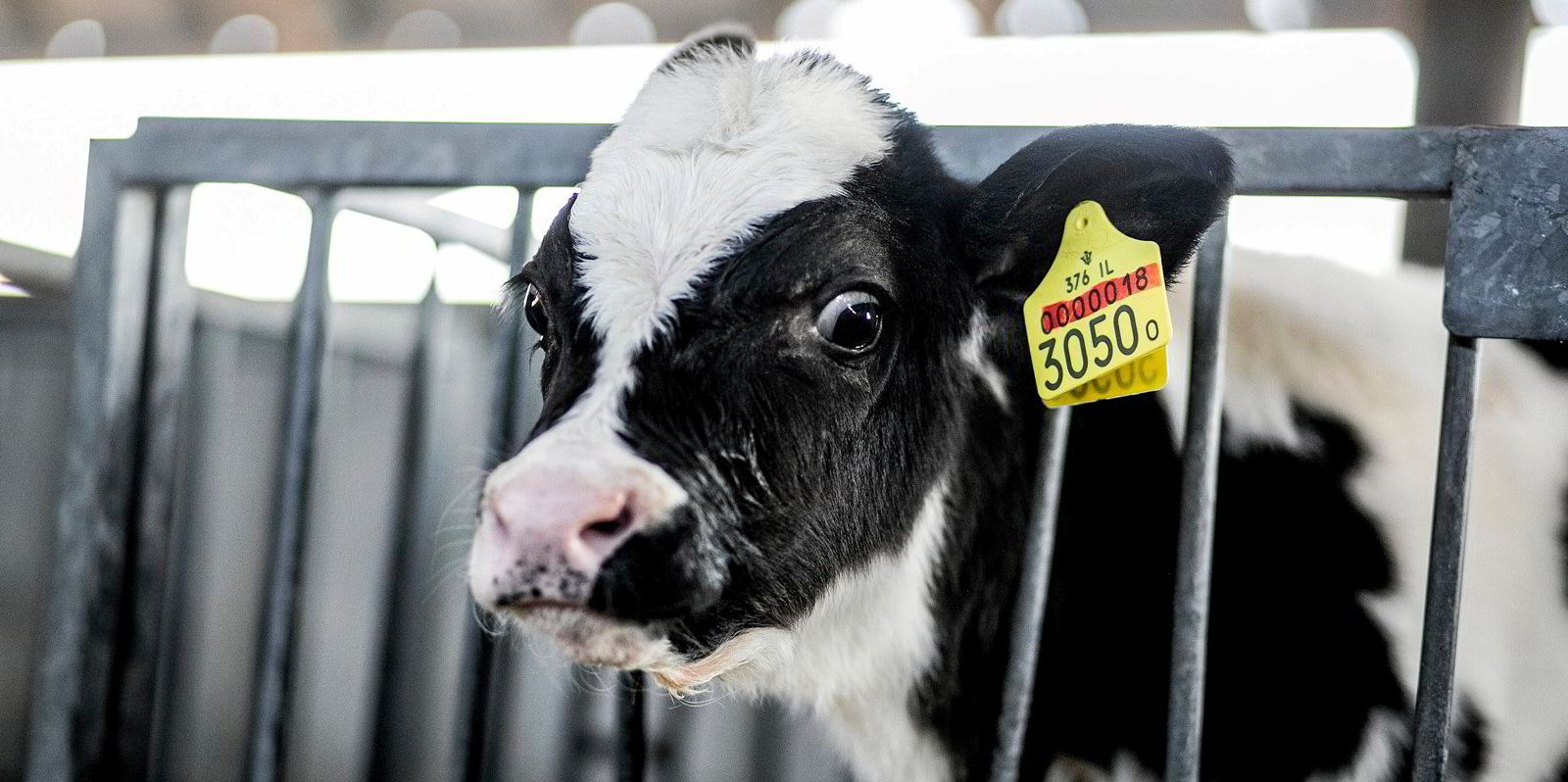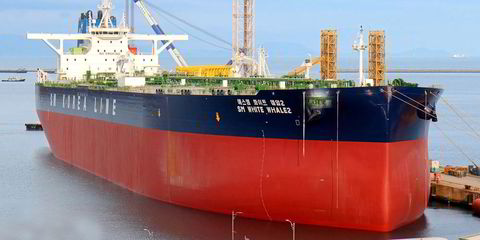A consortium developing the Green Ray project to cut methane slip from marine engines and help address shipowners’ concerns about LNG as a marine fuel has won €7m ($7.4m) of funding from the European Union.
Led by Finland’s VTT Technical Research Centre, the project will develop on-engine technologies for low-pressure dual-fuel engines — both two- and four-stroke — along with an after-treatment concept.
Other members of the consortium include energy major Shell, engine designer Wartsila, shipbuilder Chantiers de l’Atlantique, shipowner CMA CGA, class society DNV, the Finnish Meteorological Institute, ship manager MSC Cruises Management and non-profit organisation Revolve Water.
In a statement on the funding, Wartsila said the solutions will be demonstrated by being installed on two newbuildings and retrofitted on an existing vessel.
“All the technologies developed in Green Ray will also be fully capable to utilise bio- or synthetic methane instead of fossil LNG,” the company said.
Wartsila said the technology for cutting methane slip on low-pressure, four-stroke, dual-fuel propulsion systems is targeted at those engines typically used by cruiseships, ferries and gas carriers.
The kit for two-stroke engines will be developed around a patented LNG injection system to reduce methane slip from tankers and container ships.
“Both technologies will be demonstrated at sea in real application during the project in collaboration with the Green Ray partners,” the company said.
Engine designers have been locking horns for several years on which company’s products have the lower levels of methane slip — the unburned fuel in the combustion process for gas engines.
- Methane accounts for just over 17% of greenhouse gases.
- It is a short-lived greenhouse gas, with an average lifetime in the atmosphere of about 12 years, but it is more potent than CO2, albeit over that shorter time frame. One tonne of methane generates about 28 times the amount of warming as the equivalent amount of CO2.
- So tackling methane emissions can present a quick-fire way to tackle greenhouse gas emissions.
But the ongoing rivalries have been brought into sharper focus by the push to decarbonise and the focus on methane’s shorter-lived, but potentially more harmful effects over those of CO2 and the uptake of LNG as a marine fuel.
Wartsila said: “The use of LNG as a marine fuel is accelerating, driven by a well-developed supply infrastructure, a clear transition to cleaner fuels and significant air pollution and climate benefits.”
But it added that the issue of methane slip “is seen as one of the main challenges to wider uptake”.
VTT principal scientist Kati Lehtoranta said: “Methane slip has become an important factor in ship owners’ decisions about whether to use LNG fuel ... we aim to reduce the slip contributing directly to reduction of the total greenhouse gas emissions, opening this pathway to even wider segment of the maritime market.”
Sebastiaan Bleuanus, general manager for research coordination and funding at Wartsila Marine Power, said: “Taking these solutions for newbuilds and retrofits to near commercial readiness will be an important step for the long-term viability of LNG as a marine fuel.”






